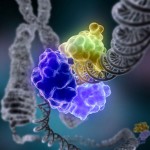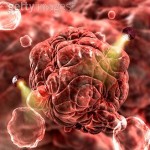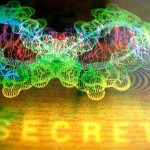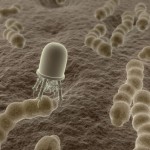
Wikimedia
I recently came across a very interesting article that was written in the Summer of 2008, Nanoparticle-based Therapies in Humans: A Survey, available at http://www.rpitechnology.com/files/NANOPA4.pdf. The subject matter deals with medical therapies for humans that contain nanoparticles. The author explores the emerging area of medicine that incorporates nanotechnology to fill the gaps of traditional delivery systems (i.e. poor water solubility and lack of target specificity). In addition to gap filling, the therapies stand poised to take the medical field to a whole new level, and will pose a myriad of challenges for the FDA, the U.S. Patent and Trademark Office (PTO), and patent attorneys worldwide.
Some Broad Background:
It is important to understand why nanoparticles are responsible for the proliferation of a new way to deliver medicine to the ailing human body. Traditional delivery systems lack the specificity element and the medicine tends to be delivered in higher than necessary doses that could lead to possible toxic exposure to the patient. Also, the human body is a hostile environment which reduces the effectiveness of traditional drugs.
The author of the article pointed out the following benefits with regard to the developments in nanomedicine:
Nanoparticles are selected for properties such as biodegradability, biocompatibility, conjugation, complexation or encapsulation and their ability to be functionalized. There are two types of nanoparticle-based therapeutic formulation: (1) those where the therapeutic molecules are the nanoparticles (therapeutic functions as its own carrier); and (2) those where the therapeutic molecules are directly coupled (functionalized, entrapped or coated) to a carrier.
Another important and desirable property of nanoparticles is the “surface area effect” that occurs. As a particle’s size decreases, the number of atoms on its surface increases relative to those at the core. This results in an exponential increase in reactivity which equates to increased efficiency and effectiveness over larger molecule delivery systems.
Patents and Commercialization:
It is critical for a company to obtain valid patents if they have any hope to profit from the research and development efforts of producing a new drug delivery system. According to the author of the article I read, the current state of nanoparticle patents is confusing at best. He states, “the proliferation of nanoparticle patent applications filed at the PTO, coupled with the continued issuance of surprisingly broad patents by the PTO, is creating a chaotic, tangled patent landscape where competing players are unsure as to the validity and enforceability of numerous issued patents.”
In an earlier post, Nanobots, Patents, and Collaboration, I proposed that innovation through collaboration is likely the most ideal way to navigate in this emerging area of technology. It seems as though there is no clear guidance in light of the Bilski decision, other than the probability is high that broad patents will continue to issue (not a bad thing, but not helpful to those involved in developing the multilayered drug delivery systems). I find myself a bit conflicted because I am a proponent of patent protection, but I am a realist and understand that the smaller the technology goes, the more overlap that occurs between competing patents. Again, I assert that collaboration is key and I look forward to participating in the process.
 The University of Buffalo recently unveiled a dramatic development in the nanotech realm. Through the use of magnetic nanoparticles it is possible for scientists to “remotely control ion channels, neurons and even animal behavior.” There are many possible real-world applications of this technology including targeted cancer, diabetes, and neurological disorder treatments.
The University of Buffalo recently unveiled a dramatic development in the nanotech realm. Through the use of magnetic nanoparticles it is possible for scientists to “remotely control ion channels, neurons and even animal behavior.” There are many possible real-world applications of this technology including targeted cancer, diabetes, and neurological disorder treatments.


